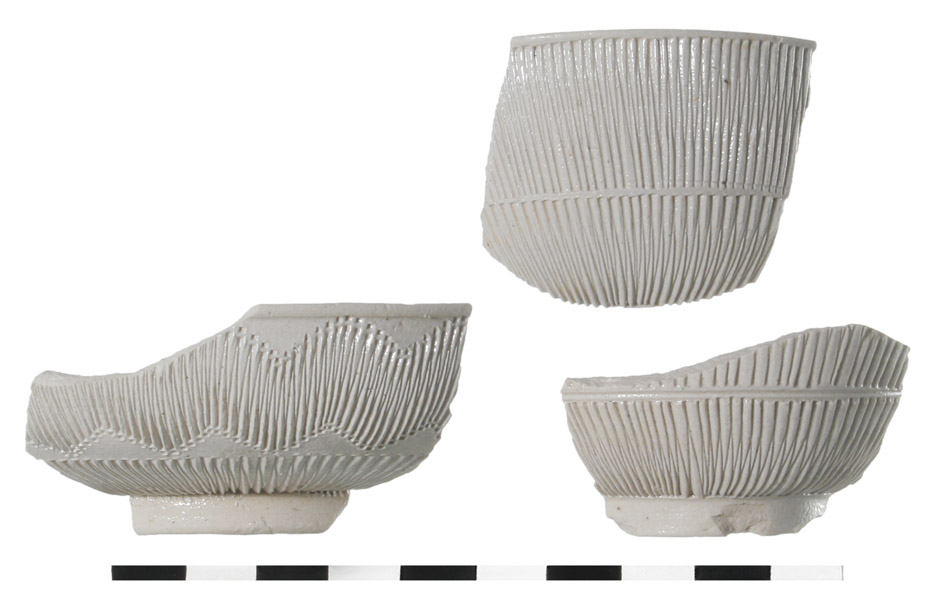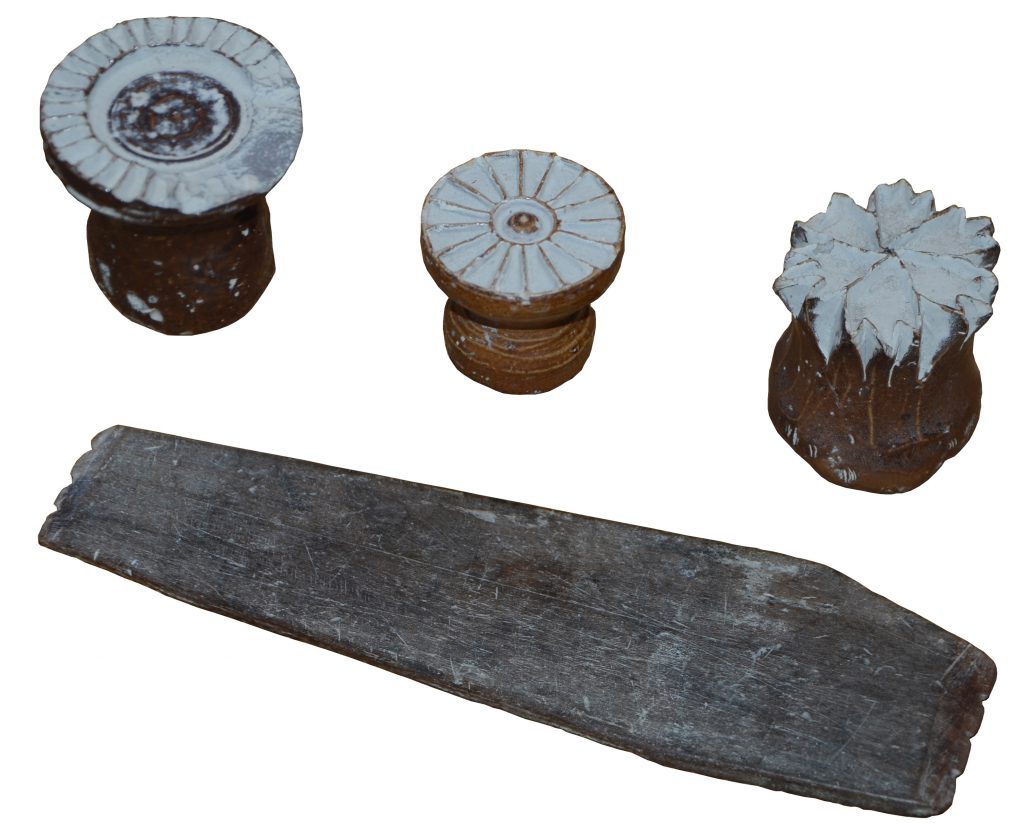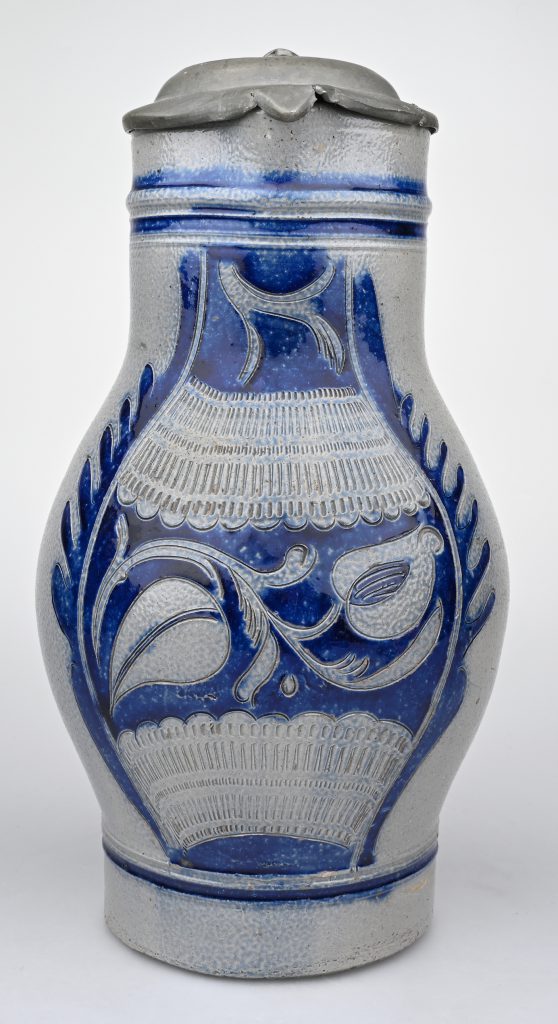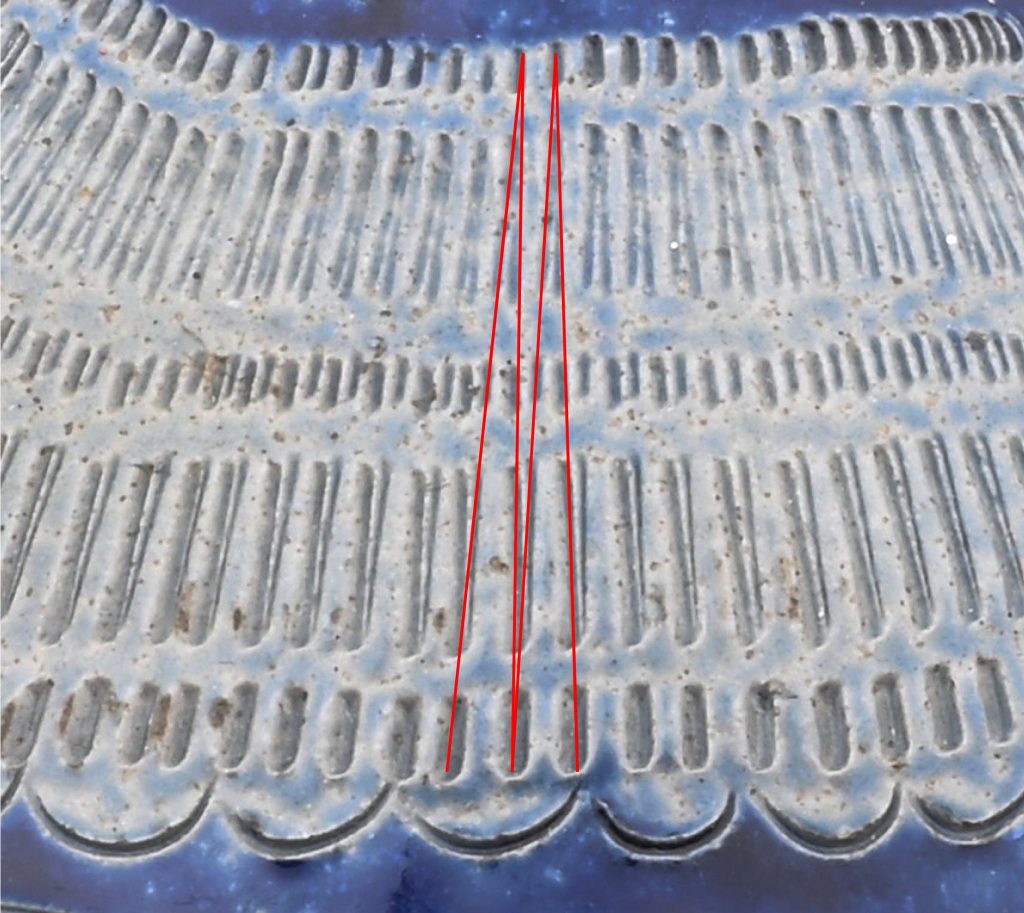
“Westerwald type” stoneware, beakers and saucers with rocker-stamped decoration, Bern, Waisenhausplatz site, c. 1700-1740 (photo by Badri Redha, Archaeology Service of Canton Bern)
Andreas Heege, 2019
Rocker stamping is an old technique, a variant of stamped decoration, which was used from as early as the Neolithic, e.g. in the Sahara, and among indigenous peoples of the United States (Hopewell pottery). In central Europe, rocker-stamped decoration was particularly popular from about 1700 on “Westerwald type” stoneware.

Below: modelling tool for making rocker-stamped decoration; above: individual stamps for decorating stoneware vessels, Pottery Museum Oberbetschdorf.
Rocker-stamped decoration was made using a spatula-type implement, which was rocked back and forth across a usually monochrome grey vessel surface to create bands, fan-shaped or heart-shaped areas of impressed patterns (photo showing the technique: Bauer et al. 1986, 180 Fig. 22). The edge of the implement could be straight or serrated like a comb; a huge variety of patterns could be made, depending on the number and position of the serrations (on the manufacturing technique see: Reineking-von Bock 1986, 87; Ernewein/Dietrich-Schneider 2006, 14; Fries 1993, 117-118).



Rocker-stamped decoration on a 19th century jug from Betschdorf, Alsace.
The effect was similar to all-over chip carving on stoneware, most of which was earlier in date, but the relief in roller stamping was not as deep and the technique also probably required a lot less effort. The absence of vessels with roller-stamped decoration at Altenrath near Siegburg can be viewed as evidence to suggest that the technique was not in use until shortly before 1700 at the earliest (cf. Francke 1999; Büttner 1997, 56).
French: l’impression pivotante. Terms used by the potters in Betschdorf, Alsace: décor rayonnant (la lame en bois est basculée en mouvement), décoration à la bascule, frise à la bascule, décor basculé
German: Knibisdekor
Translation Sandy Haemmerle
Bibliographie:
Bauer u.a. 1986
Ingolf Bauer/Werner Endres/Bärbel Kerkhoff-Hader u.a., Leitfaden zur Keramikbeschreibung (Mittelalter-Neuzeit). Terminologie-Typologie-Technologie (Kataloge der prähistorischen Staatssammlung Beiheft 2), Kallmünz 1986.
Büttner 1997
Andreas Büttner, Steinzeug Westerwälder Art des ausgehenden 16. Jh. bis 1800 in Lüneburg (Archäologie und Bauforschung in Lüneburg Band 3), Lüneburg 1997.
Ernewein/Dietrich-Schneider 2006
Jean-Louis Ernewein/Caroline Dietrich-Schneider, La poterie de grès au sel, Haguenau 2006.
Francke 1999
Ursula Francke, Kannenbäcker in Altenrath. Frühneuzeitliche Steinzeugproduktion in Troisdorf-Altenrath, Siegburg 1999.
Fries 1993
Heribert Fries, Kurrimurri. Erinnerungen an die Kannenbäcker in Höhr-Grenzhausen, Höhr-Grenzhausen 1993.
Reineking-von Bock 1986
Gisela Reineking-von Bock, Steinzeug (Kataloge des Kunstgewerbemuseums Köln 4), Köln 1986.

